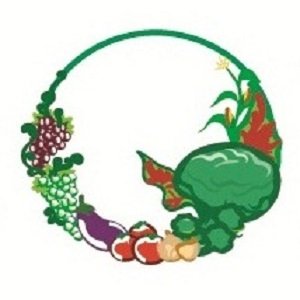Get to Know
Rhubarb
Rhubarb, with its tart and tangy flavor, is a versatile and delightful addition to any kitchen. Home cooks can look forward to crafting delicious desserts, savory dishes, and refreshing beverages with this vibrant vegetable.
The Story of Rhubarb
Rhubarb has an intriguing history that dates back to ancient China, where it was originally cultivated for its medicinal properties. It was prized for its purgative effects and was a valuable trade commodity. By the 18th century, rhubarb had made its way to Europe, where it transitioned from a medicinal plant to a culinary favorite.
In the early 19th century, rhubarb gained popularity in the United States, particularly in the northern states where it thrived in the cooler climate. Today, it remains a beloved spring and early summer crop, especially in the upper Midwest. Fun fact: Despite its common use in desserts, rhubarb is actually a vegetable!
Availability
At Featherstone Farm, located in USDA hardiness zone 4b, rhubarb is typically available from late April through June. The cool climate and rich soil of this region provide ideal growing conditions for rhubarb, making it a staple in many CSA boxes during these months.
Storage
To store rhubarb, first remove the leaves, as they are toxic and should not be consumed. Trim the ends of the stalks and wash them thoroughly. For short-term storage, wrap the stalks in a damp paper towel and place them in a plastic bag in the refrigerator. This method will keep the rhubarb fresh for up to two weeks.
For longer storage, rhubarb can be frozen. Cut the stalks into one-inch pieces and spread them out on a baking sheet to freeze individually. Once frozen, transfer the pieces to a freezer-safe bag or container. Frozen rhubarb can be stored for up to a year without losing its flavor or texture.
Uses
Rhubarb's unique tartness makes it a versatile ingredient in both sweet and savory dishes. Here are some ideas for using rhubarb in your kitchen:
Desserts: Rhubarb is a classic choice for pies, crisps, and cobblers. Combine it with strawberries for a delightful contrast of sweet and tart flavors.
Jams and Sauces: Rhubarb makes delicious jams and sauces that can be used to top ice cream, pancakes, or yogurt.
Beverages: Rhubarb can be used to make refreshing beverages like rhubarb lemonade or infused in cocktails for a unique twist.
Savory Dishes: Rhubarb's tartness pairs well with rich meats like pork or duck. Try incorporating it into a chutney or glaze.
Health Benefits
Rhubarb is not only tasty but also packed with health benefits. It is rich in antioxidants, which help fight free radicals in the body and reduce the risk of chronic diseases. Rhubarb is also a good source of dietary fiber, which aids in digestion and promotes a healthy gut. Additionally, it contains vitamin K, which is essential for bone health and proper blood clotting.
Nutritional Profile
Here is the nutritional information for a one-cup serving (about 122 grams) of raw rhubarb:
Calories: 26
Total Fat: 0.2g
Saturated Fat: 0g
Trans Fat: 0g
Cholesterol: 0mg
Sodium: 5mg
Total Carbohydrate: 6g
Dietary Fiber: 2.2g
Sugars: 1.3g
Protein: 1g
Vitamin D: 0% DV
Calcium: 10% DV
Iron: 2% DV
Potassium: 8% DV
Vitamin A: 6% DV
Vitamin C: 16% DV
Vitamin K: 45% DV
With its vibrant color and tangy taste, rhubarb is sure to bring excitement and variety to your meals this season. Enjoy experimenting with this wonderful vegetable and discover new favorite dishes!




